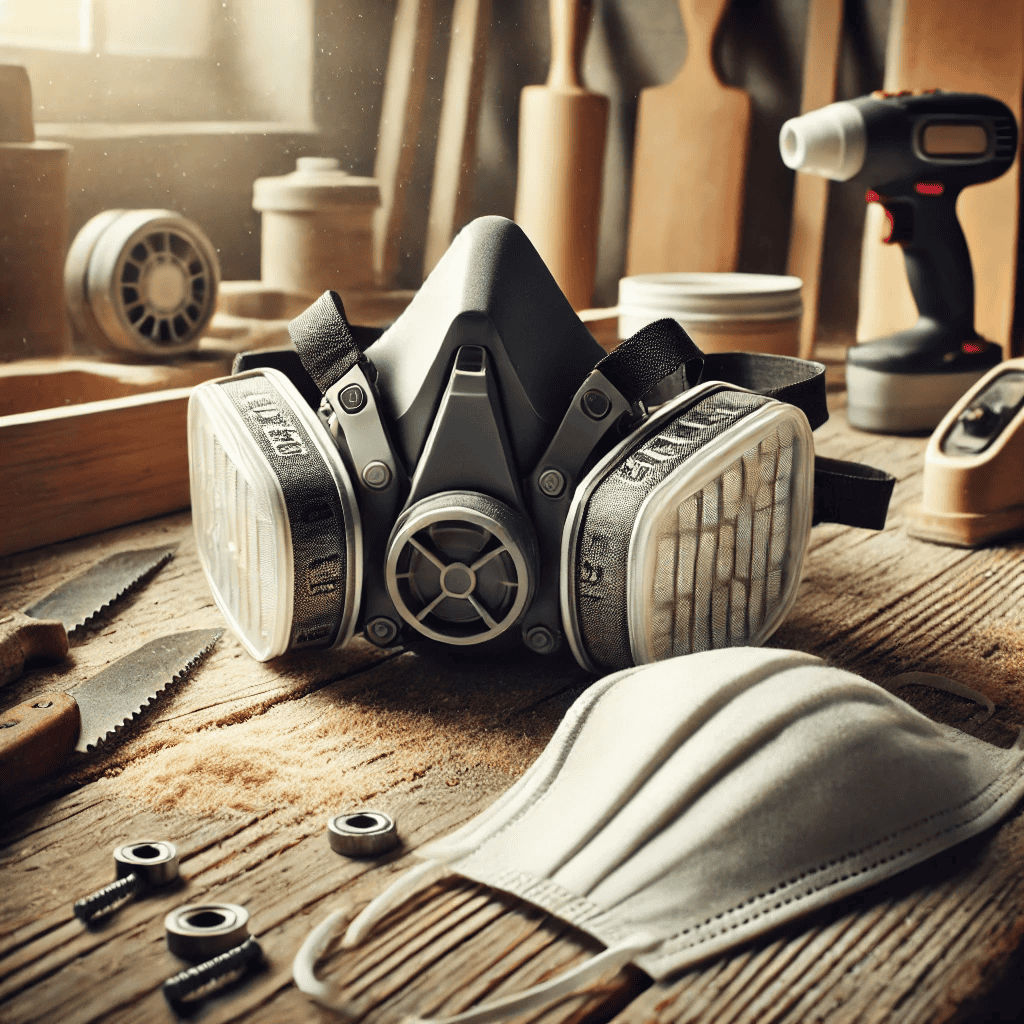Respiratory protection refers to personal protective equipment (PPE) designed to protect the wearer from inhaling harmful substances such as dust, fumes, vapors, and gases. These devices are essential for safeguarding respiratory health in various DIY projects, especially those involving chemicals, woodwork, and construction.
Types of Respiratory Protection
- Disposable Masks: Lightweight masks intended for single-use, typically used for dust and non-toxic particles.
- Reusable Respirators: Durable masks with replaceable filters, offering protection against dust, fumes, and other particulates.
- Half-Face Respirators: Cover the nose and mouth, equipped with filters or cartridges for specific contaminants.
- Full-Face Respirators: Cover the entire face, providing eye protection in addition to respiratory protection.
- Powered Air-Purifying Respirators (PAPRs): Use a battery-powered blower to pass contaminated air through a filter before reaching the user.
- Supplied-Air Respirators (SARs): Provide clean air from a separate source through a hose, suitable for highly contaminated environments.
Respiratory Protection Key Features
- Filtration Efficiency: The ability to filter out specific contaminants.
- Fit and Seal: Ensures a secure and comfortable fit to prevent leaks.
- Breathability: Allows for comfortable breathing during use.
- Durability: Reusable masks should withstand regular use and cleaning.
- Adjustability: Straps and fittings should be adjustable for a snug fit.
- Compatibility: Can be used with other PPE like safety glasses or helmets.
Choosing the Right Respiratory Protection
Selecting the appropriate respiratory protection depends on the nature of the DIY project and the specific hazards involved. Identify the contaminants you’ll be exposed to and choose a respirator that offers the necessary protection. For instance, dust masks may suffice for sanding projects, while painting with solvents may require a half-face or full-face respirator with chemical cartridges. Comfort and fit are crucial, so try on different models to find one that fits well and doesn’t hinder your work.
Proper Use and Techniques
To ensure maximum protection, it’s vital to wear respiratory protection correctly. Follow the manufacturer’s instructions for fitting the respirator, ensuring a tight seal against your face. Perform a fit check each time you wear the mask by covering the filter area and inhaling; the mask should collapse slightly without allowing air in. Be mindful of the duration and environment of use, replacing filters or masks as recommended to maintain effectiveness.
Maintenance and Care
Proper maintenance extends the life of reusable respirators and ensures ongoing protection. Clean the respirator regularly with mild soap and water, avoiding harsh chemicals that could damage it. Store the respirator in a dry, clean place away from contaminants and direct sunlight. Inspect the respirator before each use for signs of wear or damage, and replace any worn-out parts or filters promptly.
Safety Tips
- Always use the right type of respiratory protection for the specific task.
- Ensure a proper fit and seal to maximize effectiveness.
- Replace disposable masks and filters as recommended by the manufacturer.
- Do not modify the respirator in any way.
- Be aware of the limitations of your respiratory protection and avoid environments beyond its capability.
Conclusion
Respiratory protection is a critical component of safety in DIY projects. By choosing the right type of respirator, using it correctly, and maintaining it properly, you can protect yourself from harmful airborne substances and ensure a safe working environment. Always prioritize your respiratory health and take the necessary precautions to breathe easy during your DIY endeavors.


